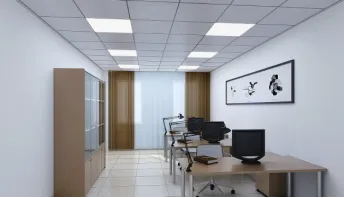- Afrikaans
- Albanian
- Amharic
- Arabic
- Armenian
- Azerbaijani
- Basque
- Belarusian
- Bengali
- Bosnian
- Bulgarian
- Catalan
- Cebuano
- Corsican
- Croatian
- Czech
- Danish
- Dutch
- English
- Esperanto
- Estonian
- French
- German
- Greek
- Hindi
- Indonesian
- irish
- Italian
- Japanese
- Korean
- Lao
- Malay
- Myanmar
- Norwegian
- Norwegian
- Polish
- Portuguese
- Romanian
- Russian
- Serbian
- Spanish
- Swedish
- Thai
- Turkish
- Ukrainian
- Uzbek
- Vietnamese
Gus . 07, 2024 20:00 Back to list
Comparison of Gypsum and PVC Ceilings Exploring Key Differences in Material and Performance
The Difference Between Gypsum and PVC Ceilings A Comparative Analysis
When it comes to interior design and construction, choosing the right materials for ceilings is crucial. Gypsum and PVC (polyvinyl chloride) ceilings are two popular options that offer distinct characteristics and benefits. Understanding the differences between these two types of ceilings can help homeowners and contractors make informed decisions based on their specific needs.
1. Material Composition
The most fundamental difference between gypsum and PVC ceilings lies in their material composition. Gypsum ceilings are made from gypsum boards, a type of plasterboard constructed from a core of gypsum sandwiched between two layers of thick paper or fiberglass. This natural mineral is known for its fire-resistance properties.
On the other hand, PVC ceilings are made from a synthetic plastic polymer. They are typically produced as panels that can be installed in various ways, such as directly on the ceilings or as part of a suspended ceiling system. PVC’s composition allows for a wide variety of styles and finishes, making it an attractive choice for modern interiors.
2. Aesthetics and Design Options
When it comes to aesthetics, PVC ceilings outshine gypsum in terms of versatility. PVC panels come in a plethora of colors, patterns, and designs, allowing homeowners to achieve a particular decor style easily. They can imitate wood, metal, or even decorative plaster and can be easily customized to fit unique design themes.
Gypsum ceilings, while available in different finishes, tend to have a more traditional and understated appearance. They can be painted or textured, but they do not offer the same level of design flexibility as PVC. However, gypsum ceilings can create a sophisticated look, especially when used with intricate plaster moldings or decorative elements.
3. Durability and Maintenance
difference between gypsum and pvc ceiling

In terms of durability, PVC ceilings have the advantage. They are water-resistant, making them suitable for areas with high humidity, such as bathrooms and kitchens. PVC is also resistant to mold, making it a low-maintenance option. Cleaning PVC ceilings generally requires only a wipe with a damp cloth, and they do not require painting or refinishing.
Gypsum ceilings, while durable in their own right, are more susceptible to moisture damage. In humid environments, gypsum panels can sag or develop mold, requiring more maintenance and potential replacement. Gypsum ceilings often need repainting over time to maintain their appearance, adding to the upkeep costs.
4. Installation Processes
The installation processes for gypsum and PVC ceilings differ significantly. Gypsum boards typically require framing and can be labor-intensive to install. The procedure involves measuring, cutting, and securing the boards to a structural framework, followed by taping, mudding, and finishing. This might necessitate professional installation, especially for complex designs.
Conversely, PVC ceilings offer a more user-friendly installation. Most PVC panels can be easily cut to size and installed with nails or adhesive. This flexibility makes PVC ceilings a popular choice for DIY enthusiasts looking to update their spaces with minimal hassle.
5. Cost Considerations
Cost is another important factor to consider. Generally, gypsum ceilings are more affordable in terms of initial material costs compared to PVC panels. However, when factoring in installation labor and maintenance expenses over time, the overall cost can balance out. PVC ceilings might have a higher upfront cost, but their durability and low maintenance can lead to savings in the long run.
Conclusion
In summary, both gypsum and PVC ceilings offer unique advantages and disadvantages. Gypsum ceilings are known for their fire-resistant properties and classic appearance, while PVC ceilings provide versatility and ease of maintenance. Homeowners should evaluate their priorities—whether aesthetics, durability, maintenance, or budget—before making a choice. Understanding these differences will ultimately lead to a ceiling that meets both functional needs and design aspirations.
-
Transform Interiors with PVC Gypsum Ceiling: A Stylish, Durable, and Moisture-Resistant SolutionNewsMay.19,2025
-
The Smart Interior Upgrade: Discover the Durability and Versatility of Gypsum Ceiling Access Panel SolutionsNewsMay.19,2025
-
The Smart Choice for Interior Design: Discover the Value of PVC Gypsum Ceiling SolutionsNewsMay.19,2025
-
Mineral Fiber Ceiling Tiles: The Smart Blend of Performance and AestheticsNewsMay.19,2025
-
Mineral Fiber Ceiling Tiles: The Superior Choice Over Gypsum for Sound and Fire SafetyNewsMay.19,2025
-
Mineral Fiber Ceiling Tiles: Eco-Friendly Strength and Style for Every CeilingNewsMay.19,2025







